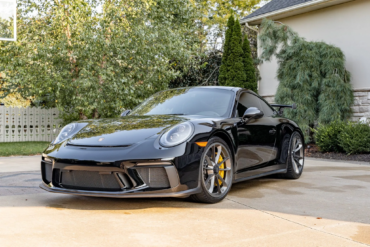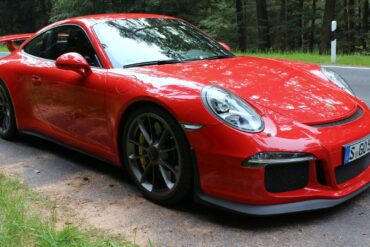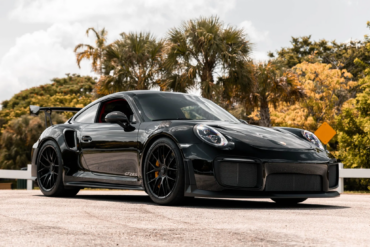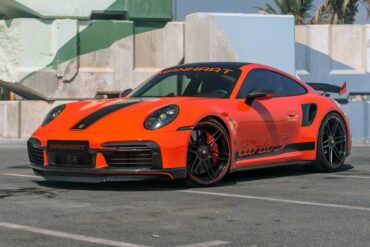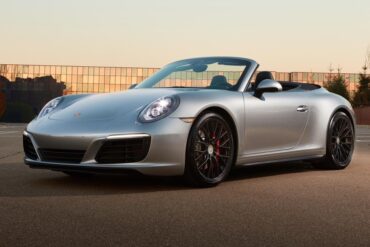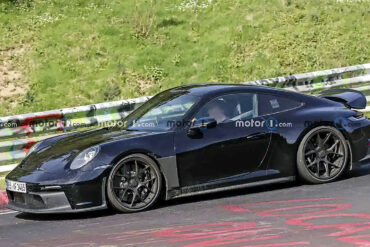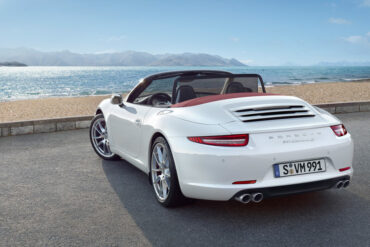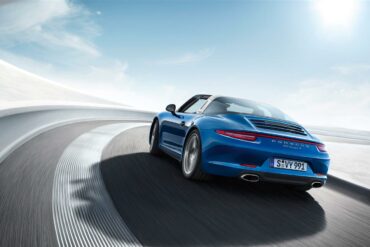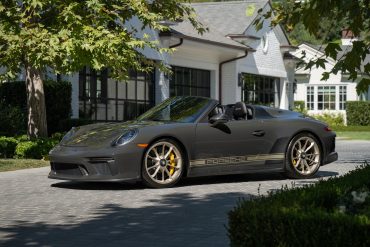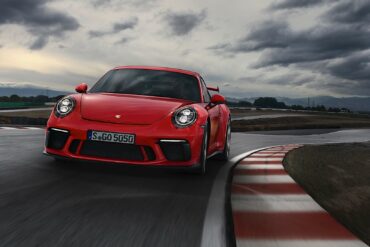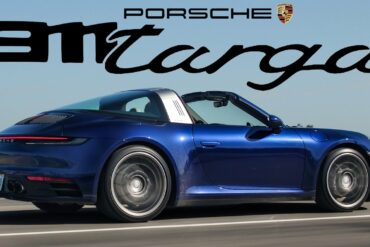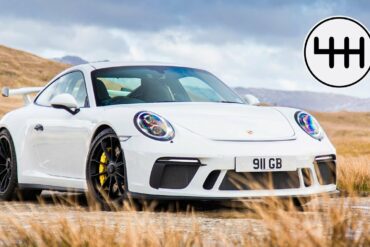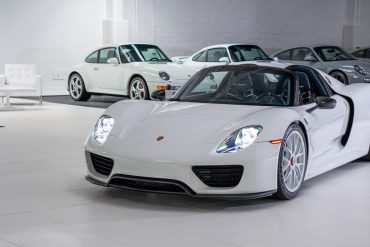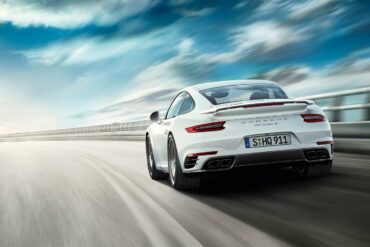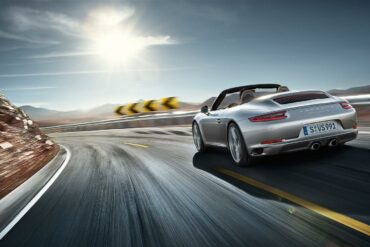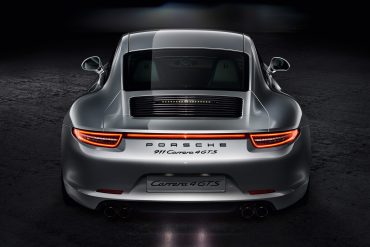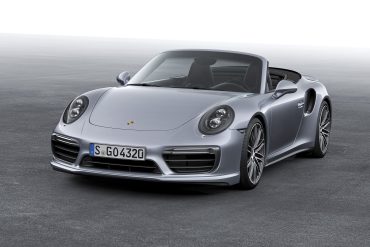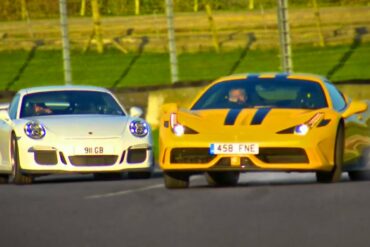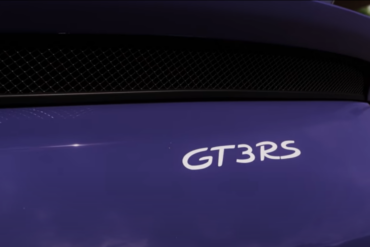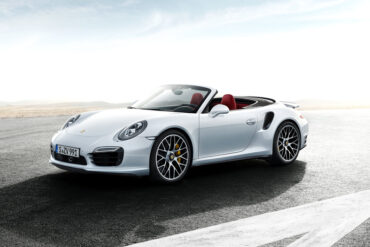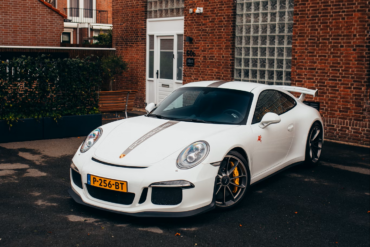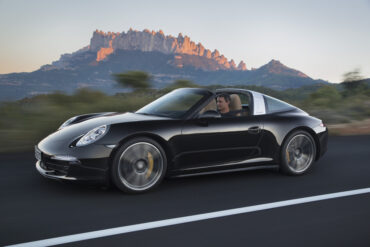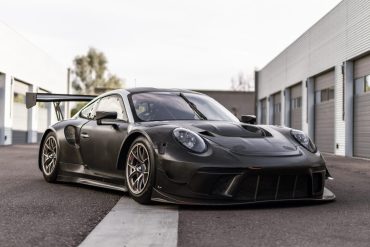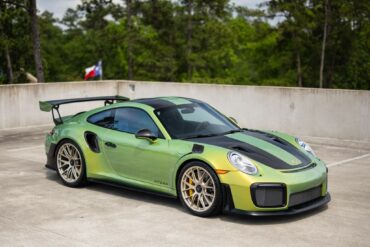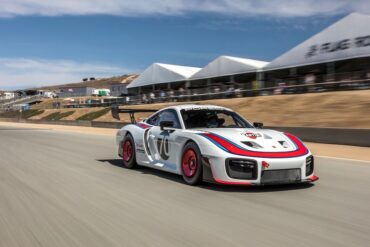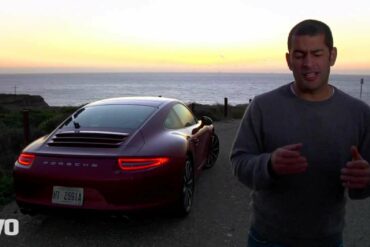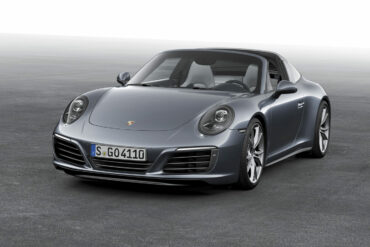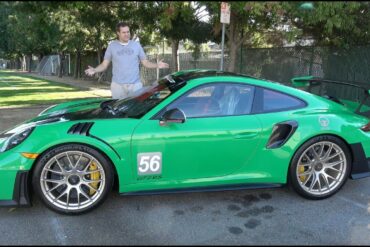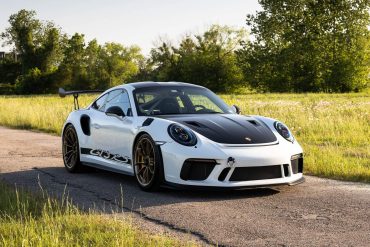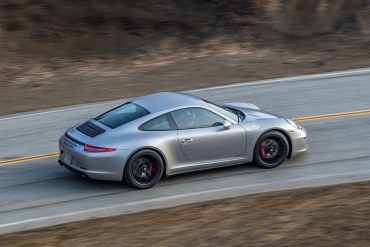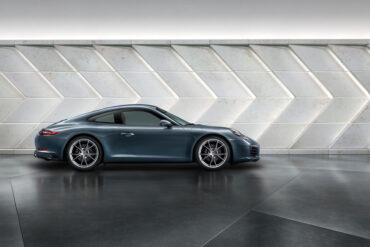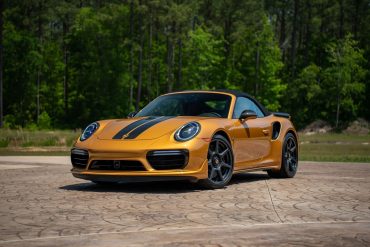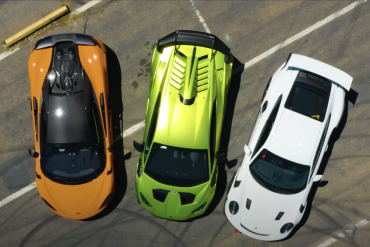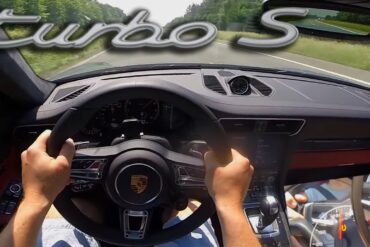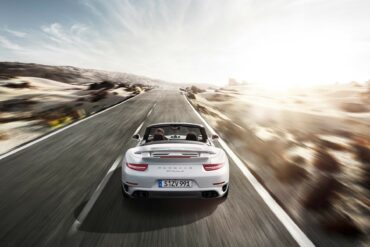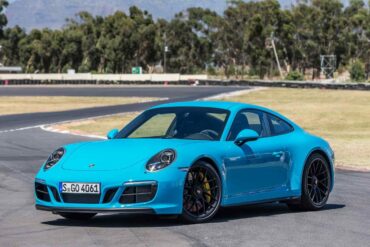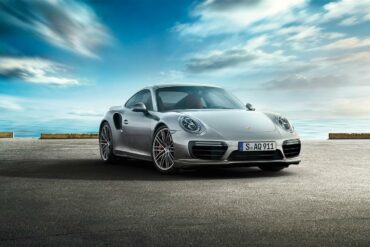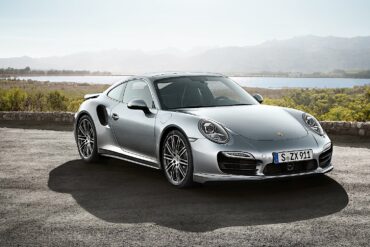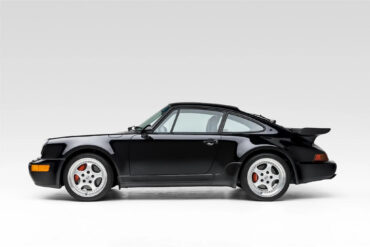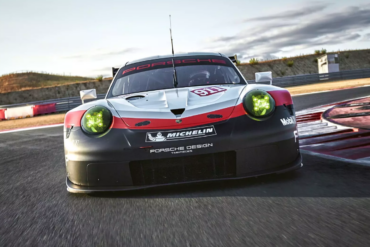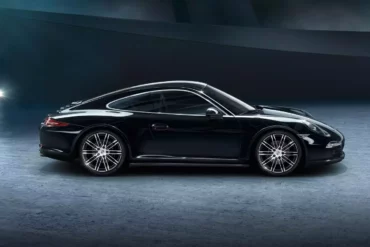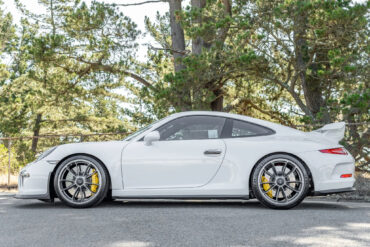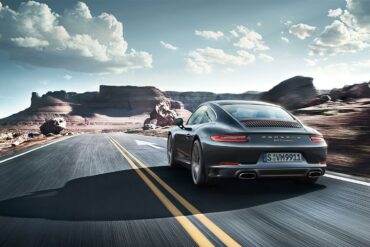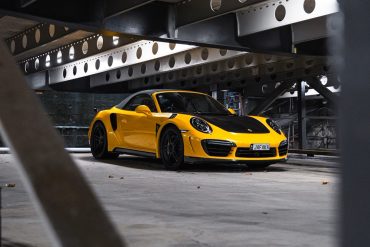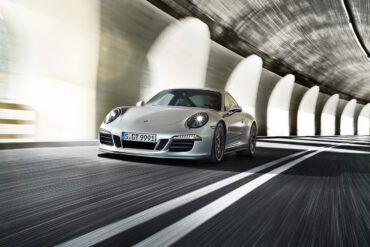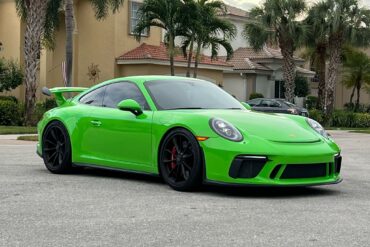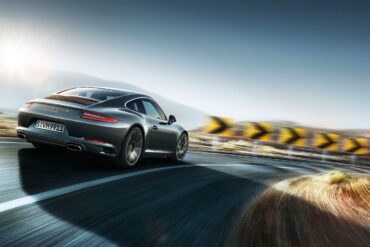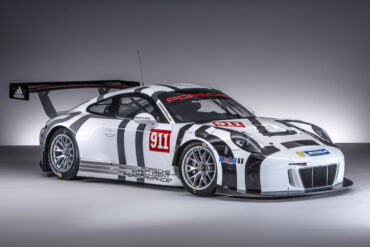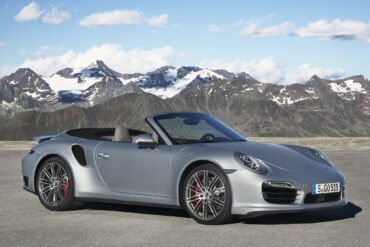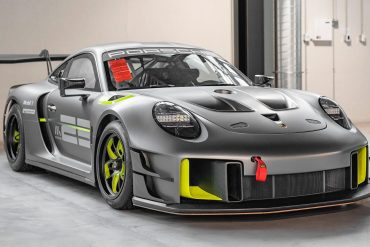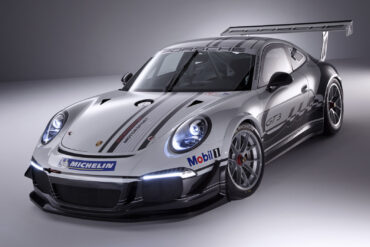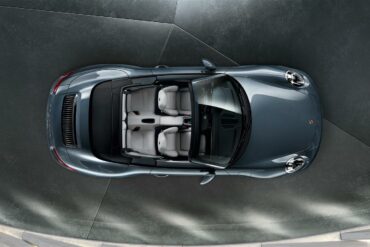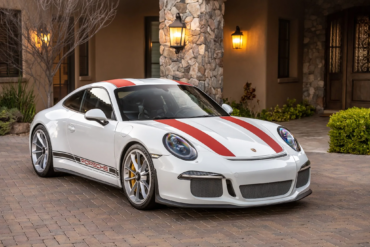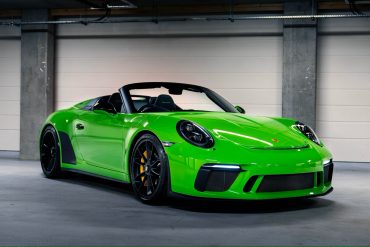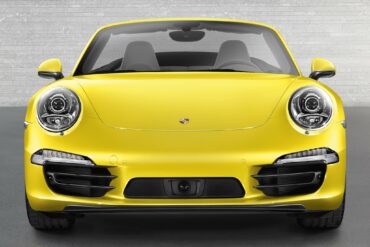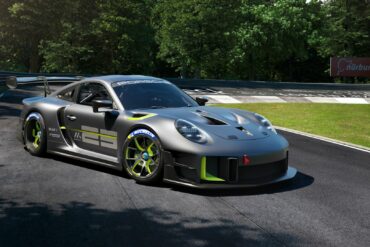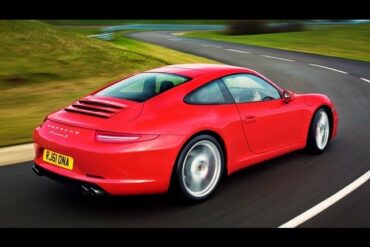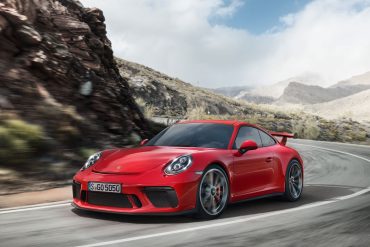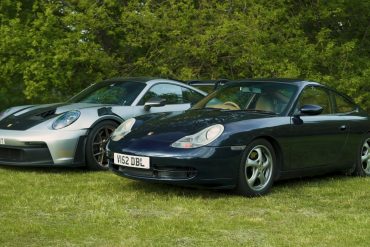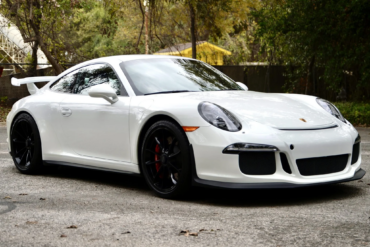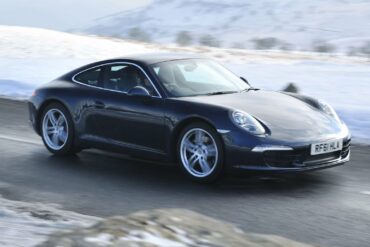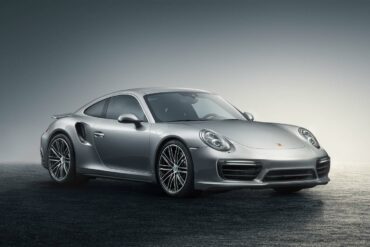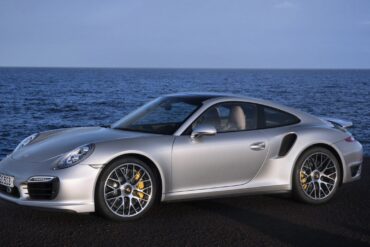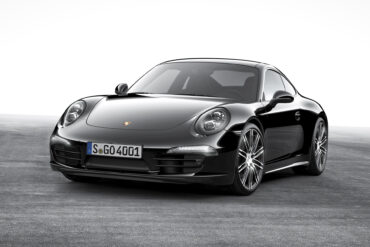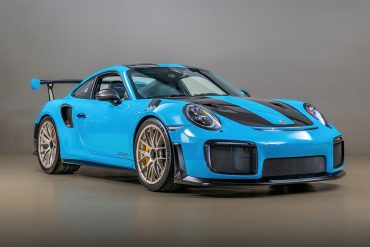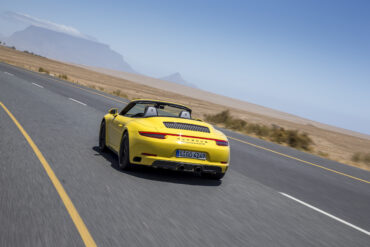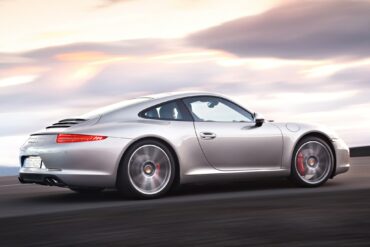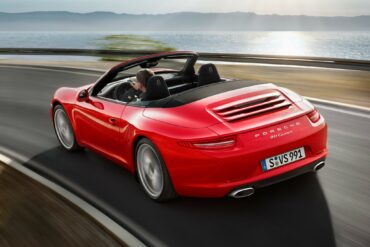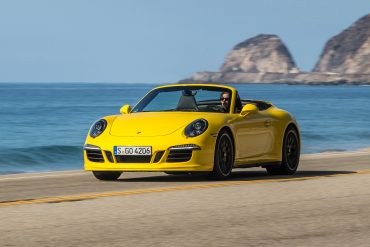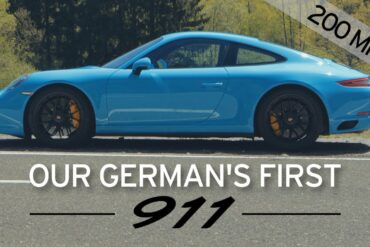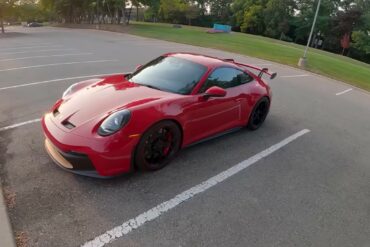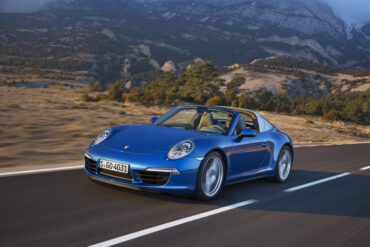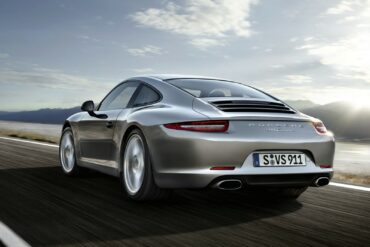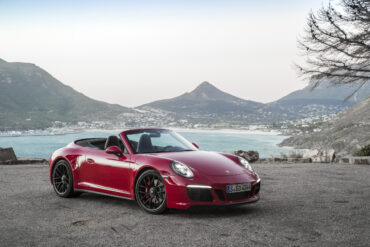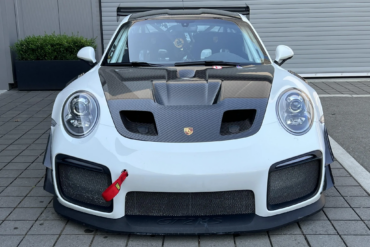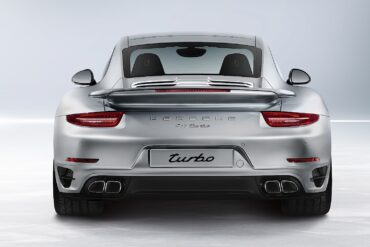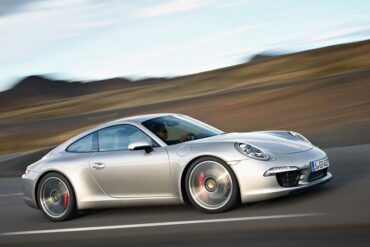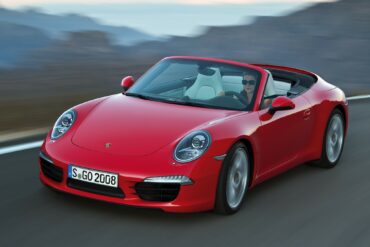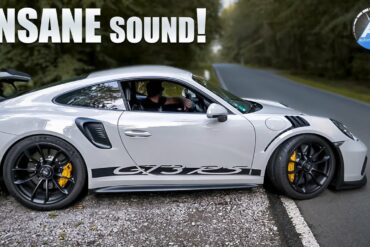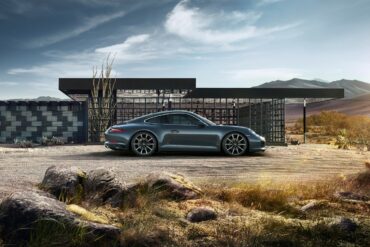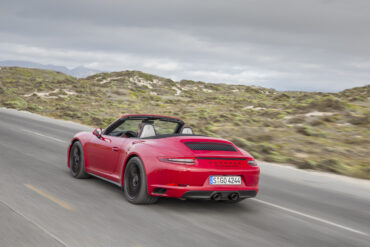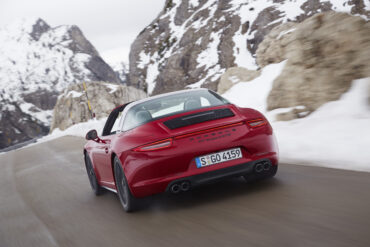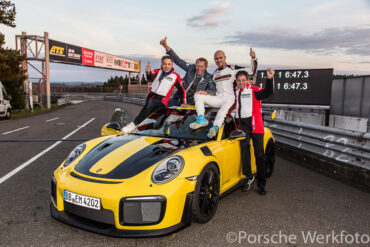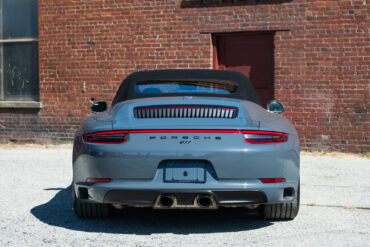The Porsche 911 GT3 | Chris Harris Drives | Top Gear In this week’s instalment, Chris Harris tackles the mighty...
Porsche 911 (991)
The Type 991 911 series was the seventh generation of the iconic 911. The 991 generation models were unmistakably 911 in looks and design philosophy, but the 991 was really the ultimate evolution of Porsche 911s becoming highly technical, high quality and well built machines. Quality improved and the technology jump finally vaulted Porsche to the top of the automakers in terms of building the best cars on the planet. The Type 991 represented the most technically advanced 911 model to date and the 991 looked more powerful than any other 911 before – an effect that was heightened by the wider track and a stretched wheelbase. It also featured adaptive aerodynamics: the 911 was the first series sports car from Porsche to adopt this technology from the 918 Spyder hybrid super sports car. The 991.1 generation cars launched as MY 2012 cars. The 345hp 3.4 liter Carrera and 400hp 3.8 liter Carrera S launched first, in both Coupe and Cabriolet bodystyles and could be had with either rear and all-wheel drive drivetrains. The 991s all got electric power steering which took away some of the feel we were used to. The Carrera S got PASM standard (optional on the Carrera). The new Turbo (in coupe and cabriolet) came out in 2013, now with a whopping 512hp. See all of our Porsche 991 Research.
Acquired by the seller in March 2019, this 991.2-generation Porsche 911 GT3 features a host of desirable options like its...
TheGetawayer Reviews the 991.1 GT3 I finally review the new 2014 Porsche 911 GT3 (991). Can it match the driving...
The 991-generation GT2 RS has been called as the pinnacle of the German automaker’s lineup of high-performance road cars. Only...
Without a doubt, the Porsche 911 Turbo is one of the most legendary and recognizable sports car models in the...
2016 – 2019 Porsche 911 Carrera 4S Cabriolet (991.2) Pictures & Gallery...
Will the lightweight terror from the 1970s inspire a new 911? Porsche rumors are almost as abundant as those surrounding...
2015 Porsche 911 Carrera S Cabriolet (991) Technical Specifications Engine Type Flat 6 Induction Normally-aspirated Cooling Water-cooled Valvetrain Four overhead camshafts,...
2015 Porsche 911 Targa 4 (991) Technical Specifications Engine layout Rear engine Engine type 6-cylinder boxer engine Cylinders 6 Valves per...
The 2019 Porsche 911 Speedster inherits the latest enhancements from Stuttgart while paying homage to the original Speedster model, the...
2018 – 2019 Porsche 911 GT3 (991.2) Pictures & Gallery ...
Bring A Trailer is currently offering a low mileage and eye-catching example of Porsche’s 991.2 generation track-focused supercar that also...
2021 Porsche 911 Targa Review 2021 Porsche 911 Targa review by The Straight Pipes. The 992 Porsche 911 Targa is...
Carfection Makes The Case for the Manual Henry Catchpole demonstrates why the manual is something to be treasured in a...
You already read about our preview of The White Collection auction here on Stuttcars. Fifty-five Porsches, mostly in white, with...
2018 Porsche 911 Turbo S (991.2) Technical Specifications Engine Engine layout Rear Engine Engine type Boxer, twin-turbo Cylinders 6 Valves per...
2018 Porsche 911 Carrera S Cabriolet (991.2) Technical Specifications Engine Engine layout Rear Engine Engine type Boxer, twin-turbo Cylinders 6 Valves...
2015 Porsche 911 Carrera 4 GTS (991) Technical Specifications Engine layout Rear Engine Engine type Boxer-6 Cylinders 6 Valves per...
The Cabriolet version of the 991.2 Turbo got the same updates as its coupe sibling. The engine in the 991.2 911 Turbo Cabriolet is a twin-turbocharged flat-six with 540 horsepower and 523 pound-feet of torque, up a decent 20 more horses versus the 991.1 Turbo Cab. Improvements that come from increases in boost and fuel-injection pressures. Rounding the skidpad, the Turbo posts 1.02 g’s relatively easily. The wide P Zeros in back and the standard four-wheel steering conspire to hide the fact that 62 percent of the Turbo’s 3656 pounds sits over the rear wheels. 0 - 60 mph is over in just 3 seconds.
Fifth Gear Ultimate Car Showdown Ferrari’s brilliant 458 Speciale takes on the 991 Porsche 911 GT3, with two of our...
991.1 Porsche 911 GT3 RS Review Evo’s Henry Catchpole delivers his first impressions on the incredible new 991.1 Porsche 911...
Everything you need to know about the 991.1 Turbo S Cab comes from Car and Driver test results. "Launch control puts the computer in charge and sends the 3741-pound Turbo S Cab to the far side of 60 mph in just 2.8 seconds. A quarter-mile that nearly breaks into the 10s—11.1 seconds at 124 mph—attests to how serious this car gets when provoked. We saw 1.0 g on the skidpad and a stopping distance of 151 feet, both strong numbers abetted by the hilariously staggered Pirelli P Zeros (245/35 in front, 305/30 in back)". This is in a comfortable, all-wheel drive, grand touring convertible.
Porsche introduced the 991 GT3 for the 2014 model year, as follow up to the multiple 997 GT3 variants. The...
This is the open-top model for those who don’t want the full convertible experience – and it’s only available in the wide-hipped four-wheel drive bodyshell. The new Targa is a striking design, echoing the 1965 original with its fixed rollover bar. The Targa 4S, gets you the more powerful 3.8 engine from the Carrera S. It mixes regular Carrera 4S go with a sense of style and everyday usability (those occasional rear seats, the real possibility of 30mpg in everyday driving). Great car.
Based on the 911 GT3 RS production sports car, Porsche has designed a customer sport race car for GT3 series...
Live now on PCARMARKET is a 2019 Porsche 911 GT2 RS with a stunning one-of-a-kind Python Green Chromaflair exterior finish...
The 935 tribute car was a non-street-legal collector's car built in a series of 77 cars. It was built from the 911 991.2 GT3 R racing car, fitted with the engine and transmission from the 911 991.2 GT2 RS street car and with the bodykit showing some design details from the 935 cars. The problem: it was not as powerful as the 1978 935 was with even smaller engine and the modern car is much heavier, so the power-to-weight ratio was almost 60% better 40 years earlier.
Chris Harris Review of the 991 Porsche 911 Chris Harris gets a first look at the new 911 in California....
2017 Porsche 911 Targa 4 (991.2) Technical Specifications Engine Engine layout Rear Engine Engine type Boxer, twin-turbo Cylinders 6 Valves per...
Doug Demuro and the 991.2 GT2 RS The 2018 Porsche 911 GT2RS is the craziest Porsche 911 of all time....
In 2018, Porsche introduced the facelifted 991.2 version of the 911 GT3 RS. This updated model featured redesigned aerodynamic bodywork...
Porsche 911 (991) Technical Specs & Performance Porsche 911 (991) Production Car Specs Weight here is DIN weight = car...
The 991.2 generation Carrera range update was a big one. The base coupe looks about the same, but under the hood Porsche did something crazy. Gone is the 3.4 liter naturally aspirated flat 6, replaced by a 3.0 turbocharged flat six. The good news is that the new engine is pumps out 370 hp and 331 ft lbs of torque, a big leap over the previous generation (output is up over the previous car by 20 horsepower and 44 lb-ft of torque). Inside, the updated 911 hasn’t changed dramatically, and although Porsche’s new PCM infotainment system is faster and more intuitive to use.
With a limited production of just 500 units worldwide, the Porsche 911 Turbo S Exclusive Series lives up to its...
McLaren 600LT vs Lamborghini Huracan STO vs Porsche GT3 RS This is actually a pretty fair comparison video. For those...
The Differences Between the 991.1 and 991.2 We have all seen these debates all over forums and Facebook groups countless...
2017 Porsche 911 Turbo Cabriolet (991.2) Technical Specifications Engine Engine layout Rear Engine Engine type Boxer, twin-turbo Cylinders 6 Valves per...
2016 Porsche 911 Turbo S Cabriolet (991) Technical Specifications Engine layout Rear Engine Engine type Twin Turbo Boxer w/ VTG Cylinders...
2017 – 2019 Porsche 911 Carrera GTS (991.2) Pictures & Gallery...
At the heart of the 991.2 911 Turbo is a twin-turbocharged flat-six with 540 horsepower and 523 pound-feet of torque. That’s a meaningful 20 more horses than the 991.1 Turbo. Improvements that come from increases in boost and fuel-injection pressures. Rounding the skidpad, the Turbo posts 1.02 g’s relatively easily. The wide P Zeros in back and the standard four-wheel steering conspire to hide the fact that 62 percent of the Turbo’s 3656 pounds sits over the rear wheels. With sport-plus selected, the 991.2 Turbo hits a 1.0-second run to 30 mph and a 2.6-second zero-to-60 time.
The 2019 model year marked the end of seventh-generation 911 production. To commemorate this, Porsche introduced the GT2 RS Clubsport...
What has 777 horsepower, twin turbos, and a waitlist longer than the distance from here to the moon? Ah yes,...
The 2015 Porsche 911 GT3 RS once again blurs the boundary between road-going sports cars and race cars. It is...
2014 – 2016 Porsche 911 Turbo (991) Pictures & Gallery ...
Someone is having a Merry Christmas indeed as Bring A Trailer just closed the auction for a previously featured, No...
Porsche 911 RSR (991) (2017-2019) – Pictures & Gallery...
2016 Porsche 911 Black Edition (991) Pictures & Gallery...
Does the turbocharged 911 move the game on enough? After a mammoth road test in issue 137, Total 911 decide...
Three beautiful, low-mileage Porsches are currently on offer at Bring A Trailer: a 2003 Porsche Boxster S, a 2014 Porsche...
2019 Porsche 911 Carrera Coupe (991.2) Technical Specifications Engine Engine layout Rear Engine Engine type Boxer, twin-turbo Cylinders 6 Valves per...
The Porsche 991.2 Turbo S Cabriolet is a top-of-the-line convertible with a hefty price tag of $200,400. This powerhouse offered...
With all-wheel drive and all the GTS goodies, the Carrera 4 GTS sits in a very practical place in the Porsche 911 lineup. The 4 GTS is a Carrera 4S with all the items Porsche thinks you should have at a price that is less than choosing them yourself. Standard equipment on the GTS that is normally optional on the Carrera S includes the Sport Chrono Package, Sport Exhaust, bi-xenon lights with PDLS (Porsche Dynamic Lighting System) and PASM (Porsche Active Suspension Management). Inside, four-way adjustable sport seats are standard.
This 991.2-generation Porsche 911 GT3 available for auction on PCarMarket possesses a number of desirable features, chief amongst is its...
2016 – 2019 Porsche 911 Carrera (991.2) Pictures & Gallery...
2016 – 2018 Porsche 911 GT3 R (991.1) Pictures & Gallery...
2016 Porsche 911 Turbo Cabriolet (991) Technical Specifications Engine layout Rear Engine Engine type Twin Turbo Boxer w/ VTG Cylinders 6...
Porsche Motorsport celebrated the 25th anniversary of Manthey-Racing GmbH with a remarkable special edition model known as the 911 GT2...
The new Porsche 911 GT3 Cup is powered by a 3.8-litre six-cylinder flat engine. It generates 460 hp (338 kW) at 7,500 revs, surpassing the predecessor by 10 hp. A six-speed dog-type gearbox developed by Porsche Motorsport which is operated via shift paddles at the steering wheel for the first time in a Porsche brand trophy race car transmits the power to the rear axle. The single piece race wheels with centre mount were also new.
991.2 GT2 RS – Most Powerful 911 Driven The Porsche 911 GT2 RS, then. Take a Porsche 911, add a...
2018 Porsche 911 Carrera Cabriolet (991.2) Technical Specifications Engine Engine layout Rear Engine Engine type Boxer, twin-turbo Cylinders 6 Valves per...
This particular 2016 Porsche 911 R currently listed on Bring A Trailer is #703 of 991 examples made during one-year...
Celebrating their 70th anniversary, Porsche unveiled the Type 991.2 Speedster concept at the 2018 Paris Motor Show, marking a significant...
2014 Porsche 911 Carrera 4S Cabriolet (991) Technical Specifications Engine Type Flat 6 Induction Normally-aspirated Cooling Water-cooled Valvetrain Four overhead camshafts,...
Porsche will only build 30 examples of the Clubsport 25. Mechanically, it's similar to the regular GT2 RS Clubsport. It makes the 691 horsepower from a twin-turbocharged 3.8-liter flat-six. But it gets many, many changes to the exterior and even the cooling system. As you can clearly see, the body has been lengthened, and it has also been widened. The latter is necessary to house the wide, low-offset 18-inch wheels taken from the Porsche 935, though without the aerodynamic covers.
Make no mistake that the Speedster is an absolutely fitting conclusion to the 991-generation. The Porsche 911 Speedster is an ingenious amalgamation of the latest technologies on offer, and the more simple ingredients that have been a principle of driving enjoyment since the invention of automobiles. A 502-horsepower engine, without turbochargers. A modern transmission, with just one clutch. A state-of-the-art suspension and chassis, with an unsullied purity. The list goes on. Perhaps the only drawback is that the Speedster’s rarity and price.
Reviewing The Purist Porsche We go for a drive in the 2018 Porsche 911 Carrera T Manual and PDK....
Autocar Reviews the New 991.1 Carrera S The new Porsche 911 Carrera S (991) is the most important new sports...
Porsche Option Codes – Porsche 911 (2018 Model Year) Looking to decode your 2018 Porsche 911 option codes? Want to...
Does turbocharging dull the tone of its 3-litre flat-six? Henry Catchpole provides us with a first glimpse of the second-gen...
The Porsche 911 is a legendary car, revered for its timeless design, exceptional performance, and exhilarating driving experience. It also...
In the 50th anniversary year of the 911, Porsche opened a new chapter in race track performance sports cars. The...
EVO Magazine Reviews the 2012 Base Carrera Richard Meaden gets his hands on the all-new, 991-gen Porsche 911 Carrera in...
2017 Porsche 911 Turbo Coupe (991.2) Technical Specifications Engine Engine layout Rear Engine Engine type Boxer, twin-turbo Cylinders 6 Valves per...
Porsche Option Codes – Porsche 911 (2014 Model Year) Looking to decode your 2014 Porsche 911 option codes? Want to...
The 2016 Carrera and Boxster Black Editions add some extra niceties for a value-adjusted price. And as the names suggest, both cars come in any color scheme you want so long as it’s, yes, black on black. Or black on black on black in the case of the ragtops. Available in coupe and convertible forms, with rear- or all-wheel drive, each powered by the base 350-hp 3.4-liter flat-6 engine, the 911 Carrera Black Edition adds other design treats too.
The Porsche 911 GT2RS name laid dormant in Stuttgart for almost ten years, last used in 2009 with the 997....
2019 Porsche 911 Carrera 4 GTS Cabriolet (991.2) Technical Specifications Engine Engine layout Rear Engine Engine type Boxer, twin-turbo Cylinders 6...
2012 Porsche 911 Carrera S Coupe (991) Technical Specifications Engine Type Flat 6 Induction Normally-aspirated Cooling Water-cooled Valvetrain Four overhead camshafts,...
This 2019 Porsche 911 (991.2) GT3 RS is a highly acclaimed performance car designed for track use, and it comes...
2015 Porsche 911 Carrera Cabriolet (991) Technical Specifications Engine Type Flat 6 Induction Normally-aspirated Cooling Water-cooled Valvetrain Four overhead camshafts, four...
2016 Porsche 911 Carrera GTS Cabriolet (991) Technical Specifications Engine layout Rear Engine Engine type Boxer-6 Cylinders 6 Valves per...
Top Speed In a Porsche 911 GTS German correspondent Thomas Hellmanzik gets his first 911 driving experience, and promptly hits...
This is a short video about the 2022 Porsche 911 GT3 with manual transmission. Join Chris as he takes the...
For this 991 generation Targa, Porsche went back to the original Targa concept, albeit with an even sexier design and some very cool technical tricks to boot. Porsche wanted to resurrect its classic design, but the company feared that owners would not want to get out of the car, lift off the roof panel, and stow it in the trunk. The other issue was, in the words of 911 product line director Dr. Erhard Mossle, "that the manual solution was a little bit old-fashioned." The 911 Targa 4 gets the same 350 horsepower, 3.4-liter six-cylinder motor as its hardtop siblings.
Porsche 911 GT3 (991.2) Manual Fun On this Special episode James and Thomas take a spin in the legendary Porsche...
2013 Porsche 911 Carrera Coupe (991) Technical Specifications Engine Type Flat 6 Induction Normally-aspirated Cooling Water-cooled Valvetrain Four overhead camshafts, four...
Turbo supercars fight it out The Ferrari 488 GTB is the first turbocharged, mid-engine Ferrari since the legendary F40 in...
Porsche really has hit its brief with the turbocharged Carrera GTS Cabriolet. It is hugely capable on the road, easy to live with on a daily basis, and come the weekend, it’s massively fast on track. For the money, and for drivers who really want just a little more 911, but without the mind-bending speed of a Turbo or uncompromising nature of a GT3, then this is the car for you. It also looks unique and has enough of its own style that it it feels special both on the outside and inside.
2019 was the last model year for the seventh-generation 911 (991) and for that Porsche introduced the GT2 RS Clubsport....
2015 Porsche 911 Turbo (991) Technical Specifications Engine layout Rear Engine Engine type Twin Turbo Boxer w/ VTG Cylinders 6 Valves...
Porsche Option Codes – Porsche 911 (2012 Model Year) Looking to decode your 2012 Porsche 911 option codes? Want to...
The open-top 991 Carrera S Cabriolet requires an $11,600 premium over a comparable coupe; ta not-cheap $108,950 price point for those shopping. For that, you get the best overall open-top sports car around. With the 400-hp, 3.8-liter six and the benefit of the PDK automatic’s launch control, the Carrera S cabriolet should hit 60 mph in 3.8 seconds and cover the quarter-mile in the low 12s. Performance is on-par with the coupe on backroads so any fears that this is a soft-911 are thrown out the window. This is a serious sports car, sans roof.
Porsche 991.2 GT3 RS – Turn Up the Volume Unbelievable once-in-a-lifetime DRIVE & SOUND with the recent 2018/2019 Porsche 991.2...
2017 Porsche 911 Carrera Coupe (991.2) Technical Specifications Engine Engine layout Rear Engine Engine type Boxer, twin-turbo Cylinders 6 Valves per...
2019 Porsche 911 Carrera GTS Cabriolet (991.2) Technical Specifications Engine Engine layout Rear Engine Engine type Boxer, twin-turbo Cylinders 6 Valves...
Porsche and Mercedes-AMG have been engaged in a captivating rivalry over the past few years, each striving to create the...
Porsche 911 Turbo S 992 v 991 Head To Head It’s the one you Porsche fanboys have been waiting for...
2018 Porsche 911 Targa 4 GTS (991.2) Technical Specifications Engine Engine layout Rear Engine Engine type Boxer, twin-turbo Cylinders 6 Valves...
2018 Porsche 911 Carrera 4 Cabriolet (991.2) Technical Specifications Engine layout Rear Engine Engine type Boxer, twin-turbo Cylinders 6 Valves per...


